Hardwood Styles
Refinishing Without the DustBasic knowledge about hardwood styles and personalities
Knowing someone’s style can tell you many things about him or her. The same goes when shopping for hardwood flooring.
Understanding the types, species and finishes of hardwood products can provide you with valuable information, let you shop smarter and compare with confidence.
In this section you’ll learn all about the wide array of hardwood styles on the market today. In fact, there are so many design options available you can create a hardwood floor that matches both your lifestyle and your desire for beauty, durability and practicality.

For example, inserting decorative medallions, running the boards on the diagonal, or creating a border are just some of the designs one can consider.
But before you get to the design, you need to know how to select the type of hardwood that’s right for you and your home.
Today you can choose between a pre-finished hardwood floor and one that is unfinished.
Pre-finished hardwood comes ready for installation in your home. The hardwood boards have already been sanded, stained and finished at the manufacturing plant. In many cases this can provide a harder, better- protected surface.
Pre-finished floors offer a wider variety of wood species and save hours of labor and cleanup.
But unfinished wood floors allow you to have a custom job – you choose the wood species and it’s sanded and the stain is applied on site. With unfinished you also have the chance to level the surface of the entire floor after it has been installed.
You get an extended factory finish warranty with pre-finished floors, but not with most job-site finishes
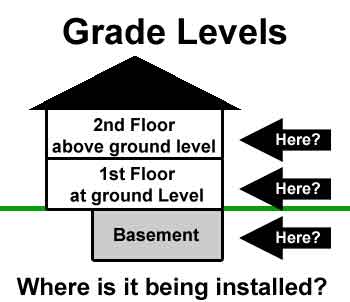
Location is Consideration No. 1
To begin with, you need to look at where you plan on installing your new wood floor.
There are limitations on where some wood floors can be installed. This is especially true for the 3/4″ solid wood floors.
Solid hardwood floors are more susceptible to moisture and are generally not recommended for basements, or installing directly onto a concrete slab.
Be in the know about Grain and Cut
Hardwood styles are the result of the wood species available. Some of the more common species are red oak, white oak, maple, cherry, white ash, hickory or pecan.
Each species has its own unique graining and texture. The graining on the boards is determined by the way it has been cut.
There are two cutting processes. “Sliced Cut” shows a more uniform pattern, whereas “Rotary Cut” displays a larger and bolder graining pattern.
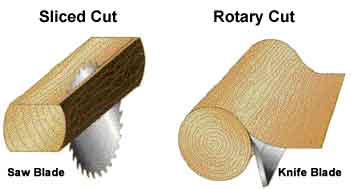
Keep Color in Mind
Within each species of hardwood you will have a choice of color and finishes. Here’s where it pays to shop carefully.
When selecting a color, choose one that either coordinates or contrasts with your cabinetry and furniture.
Also keep in mind that darker woods tend to be more formal while natural colors are more casual.
Which Finish
You should be aware that there are different types of finishes depending on whether your hardwood floor is pre-finished or job site finished.
In general, lower gloss levels are better suited for active rooms. This is because lower gloss or matte finishes help minimize the appearance of dirt and scratches.
Consider the elegant look of the high gloss finish for a more formal décor.
Upkeep is No Big Deal
The days of having to wax and scrub your hardwood floors are pretty much gone forever. Manufacturers of pre-finished wood floors have developed sophisticated techniques to quickly apply hard, durable, urethane-based finishes right at the factory.
By using ultra violet lights the pre-finished wood planks can have several coats of urethane applied within a matter of a few minutes. This is helping make hardwood floors both more affordable, and much easier to maintain.
Recently, the hardwood flooring manufacturers have begun to add small chips of Aluminum Oxide directly to the floor’s finish which dramatically increases the life of the urethane finish.
Protection lies in Numerous Coats
Most factory finished hardwood floors have several coats of finish applied to the wood’s surface. As example, many wood floor companies are applying 6-10 coats of a ultra-violet (UV) cured urethane. This would be extremely difficult for someone to duplicate on a job site finish, not to mention how many days it would take.
This is one of the reasons why many flooring mechanics, flooring retailers, and builders are pushing pre-finished hardwood floors. Instead of taking several days to install and finish a new hardwood floor a pre-finished hardwood floor is generally done in one day.
This does not mean you should wash your floor with a mop, but it does mean these floors won’t watermark like the old waxed hardwood floors. The UV cured urethane wood finishes do make these floors easier to maintain than the old waxed hardwood floors.
Factory Pre-finished hardwood finishing comes in many forms:
- UV-cured – Factory finishes that are cured with Ultra Violet lights versus heat.
- Polyurethane – A clear, tough and durable finish that is applied as a wear layer.
- Acrylic-urethane – A slightly different chemical make up than Polyurethane with the same benefits.
- Ceramic – Advanced technology that allows the use of space-age ceramics to increase the abrasion resistance of the wear layer.
- Aluminum Oxide – Added to the urethane finish for increased abrasion resistance of the wear layer, which is becoming extremely popular on the better grade wood floors.
- Acrylic Impregnated – Acrylic monomers are injected into the cell structure of the wood to give increased hardness and then finished with a wear layer over the wood.
Job-Site Hardwood Flooring finishing methods are also available
If you want a custom stained hardwood floor, or a wood floor to match existing trim, than a job-site finish is your answer.
Job-site finish means you start with a bare (unfinished) hardwood floor and than the floor is sanded, stained, and finished in the home.
The other advantage of a job-site finish is, if you are concerned with uneven heights between planks, the sanding process will smooth out the floor. Be warned, though, this can be quite a mess and the process does take several days.
Job-site Hardwood Floor finishing methods include
- Water Based Urethane – Water is used as part of the chemical make up of the polyurethane finish.
- Solvent Based Urethane – Oil is used as part of the chemical make up of the polyurethane finish.
- Moisture Cured Urethane – A similar chemical make up as solvent based urethanes, but this finish needs the humidity (moisture) in the air to cure.
What to know about board widths
When shopping for a hardwood floor you will see boards in various sizes.
The narrower board widths are referred to as “strips” and the wider units as “planks.”
You should be aware that board width can visually impact a room.
Narrow width boards will expand a room, while wider boards work well in a larger room or area.
All about Edges
Different hardwood floors have different edges. Hardwood floors come in either a beveled edge, or a square edge.
Today, most hardwood floor manufacturers are calling their beveled edge “eased edge” because the tapered edge is dramatically reduced from the old deeply grooved edges.
The beveled edges do serve a purpose. The manufacturer can produce beveled edge planks faster than square edge, which in turn lowers their production costs.
Also, a beveled edge floor is more forgiving when installed over irregular subfloors and you don’t have the problem of overwood (uneven plank heights abutting each other).
To help you understand hardwood edges, here’s a summary of today’s types:

Square Edge:
Eased Edge:
Beveled Edge:
Rating the hardness of wood
Below are listed the relative hardness for numerous wood species used in flooring.
These ratings were done using the Janka Hardness Test, which measure the force needed to embed a .444 inch steel ball to half its diameter in a piece of wood.
The higher the number the harder the wood. Although this is one of the best methods to measure the ability of wood species to withstand indentations, it should be used as a general guide when comparing various species of wood flooring.
Species Guide
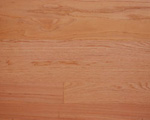
Red Oak

Quartersawn

Select

#1 Common

#2 Common

White Oak
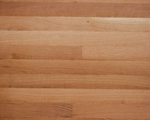
Quartersawn
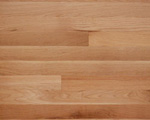
Select

#1 Common

#2 Common


Cherry


Hickory/Pecan


Maple


Pine


Reclaimed Pine


Walnut








